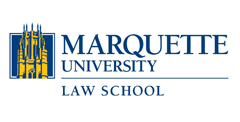Abstract
In this article, Mr. Rogers examines the tension in the digital world between the application of (a) antitrust law, which promotes competition and (b) copyright law, which limits competition in order to promote progress in science and art. He reviews the prohibitions against the exercise of monopoly power in section 2 of the Sherman Act (15 U.S.C.) and proposes a test for anti-competitive conduct that includes close scrutiny of the contract restrictions and marketing practices of those that have significant market power. Arguing that product design decisions are not immune from antitrust review, he proposes examining alleged efficiency justifications for such decisions by companies with market power in order to rule out duplicitous anti-competitive activity under the guise of product improvement. Mr. Rogers also discusses the limited monopoly granted by copyright law and the copyright holder's exclusive right to duplicate protected works. He applies principles such as fair use to the digital environment and concludes that some activities like reverse engineering to achieve compatibility or limited modification of computer screens should be allowed. He explores prohibitions against such practices in software licensing agreements and recommends that the courts distinguish between companies that have significant market power and those who do not when deciding whether to proscribe such contractual prohibitions. He examines the limitations on access in the Digital Millennium Copyright Act and case law that has begun to grapple with how that Act should be applied to equipment and software that have infringing and non-infringing uses. He concludes that copyright and antitrust law should be applied to promote access in the digital world, in spite of that Act and efforts by dominant companies to control competition.
Repository Citation
Douglas L. Rogers,
Give the Smaller Players a Chance: Shaping the Digital Economy through Antitrust and Copyright Law,
5 Marq. Intellectual Property L. Rev. 13
(2001).
Available at: https://scholarship.law.marquette.edu/iplr/vol5/iss1/2
